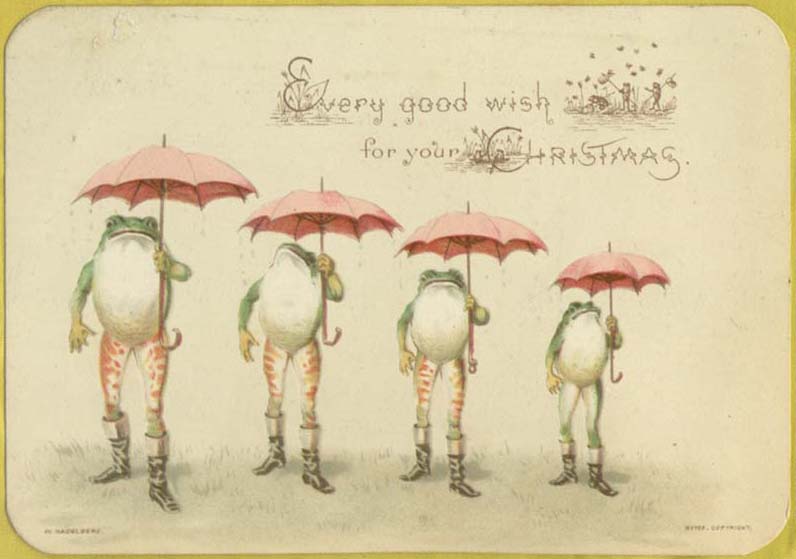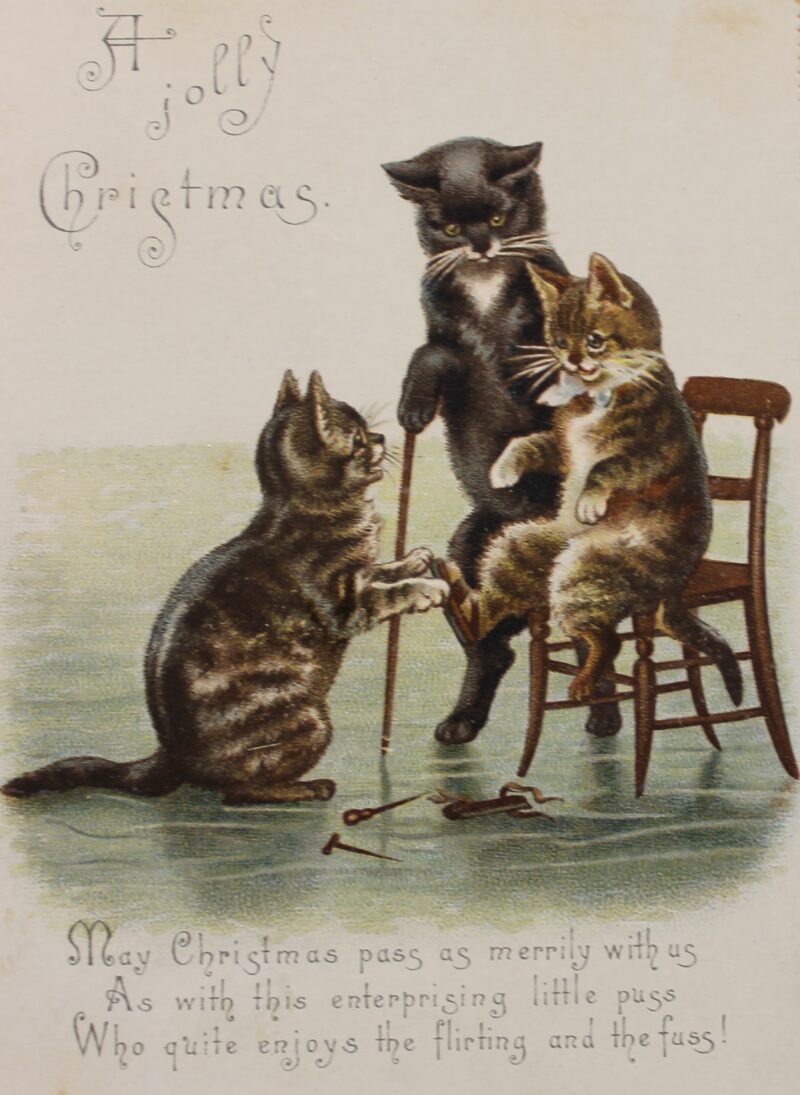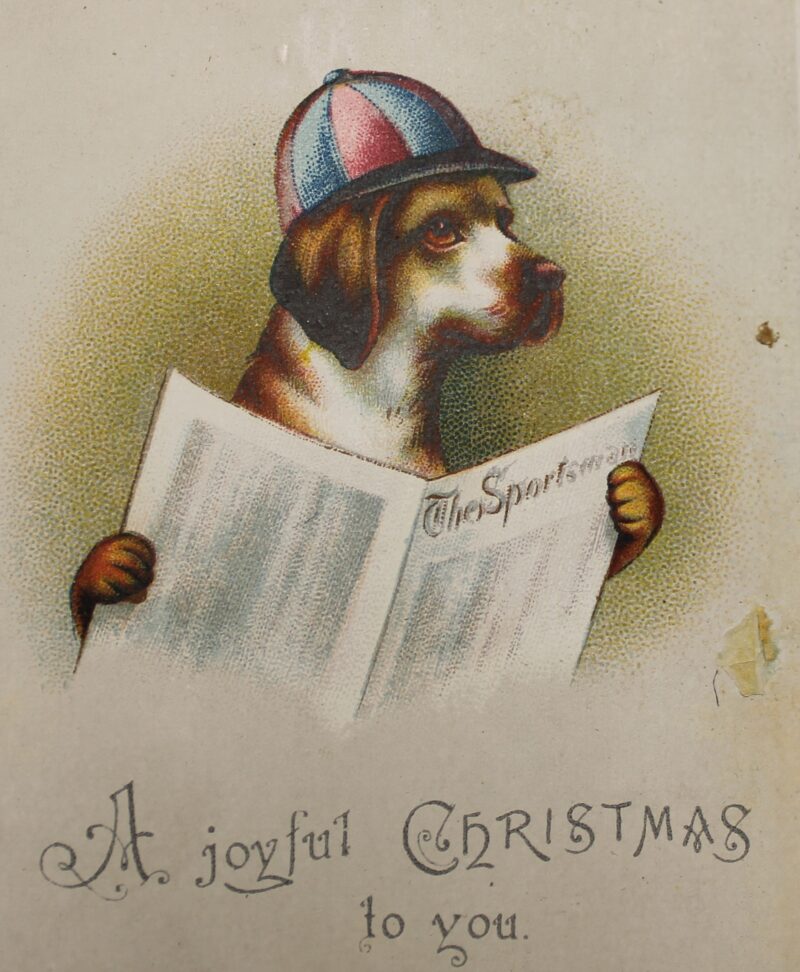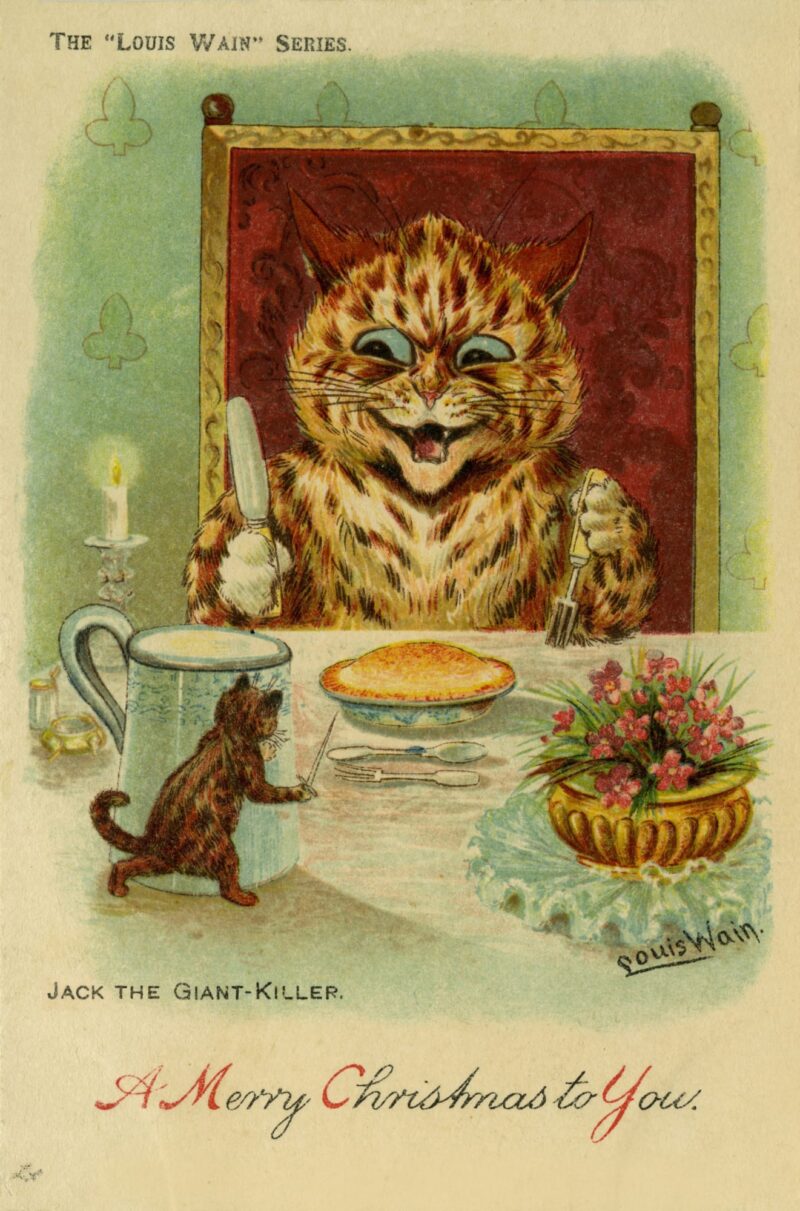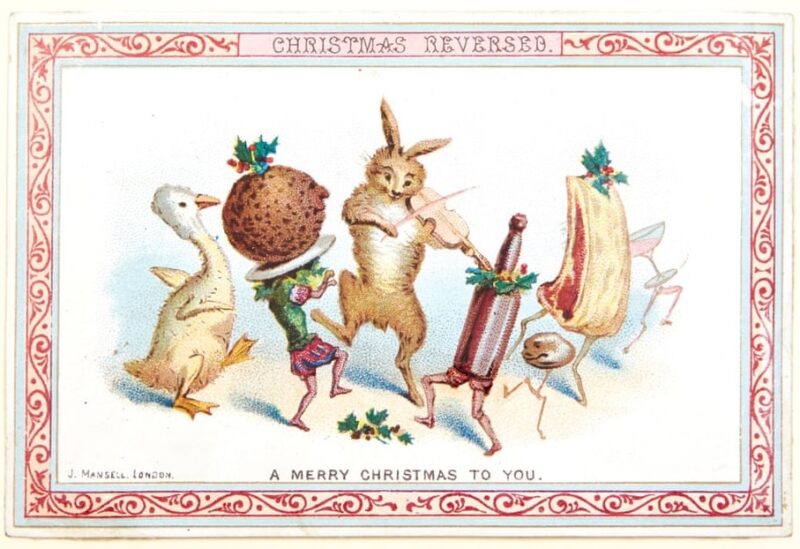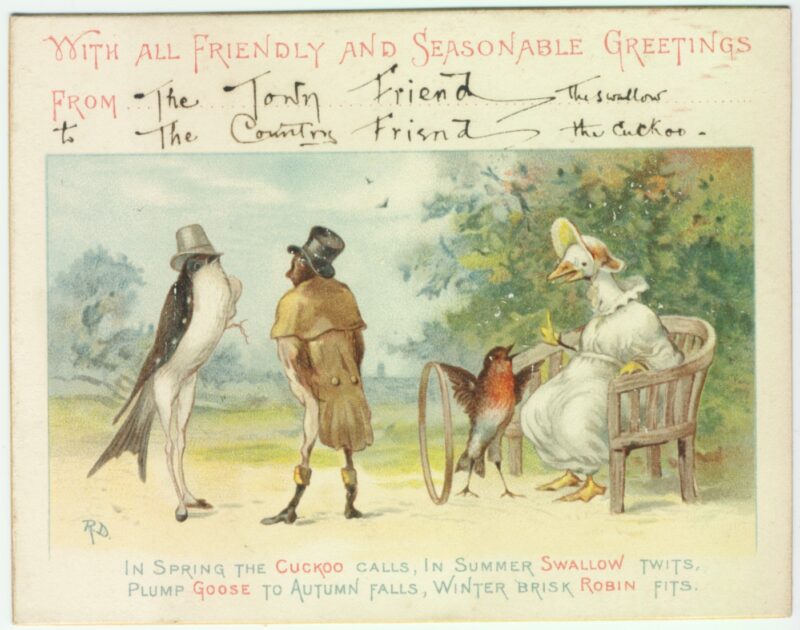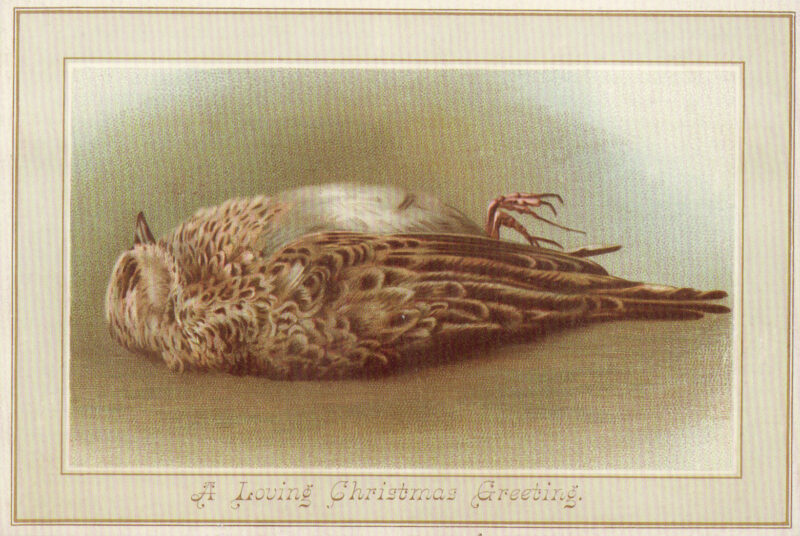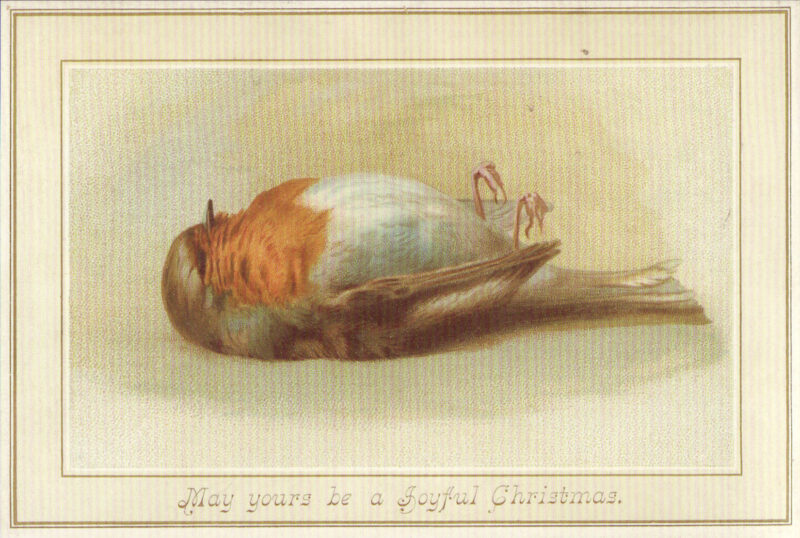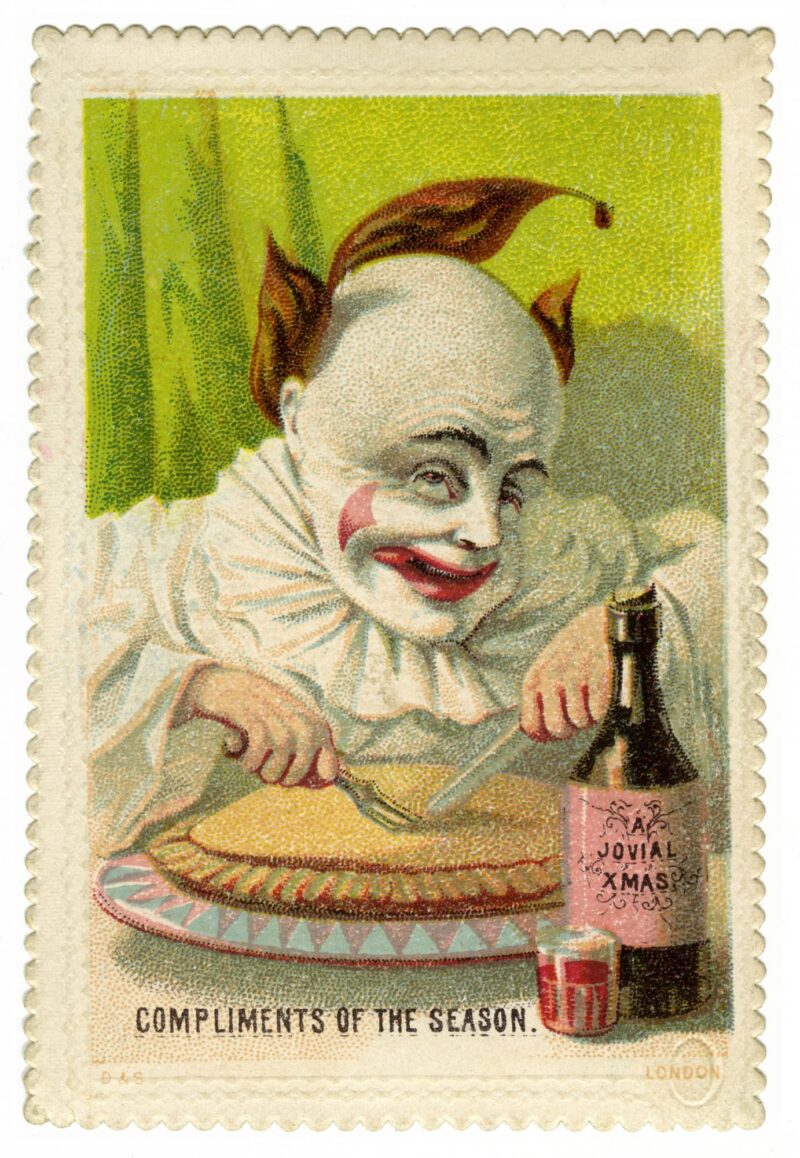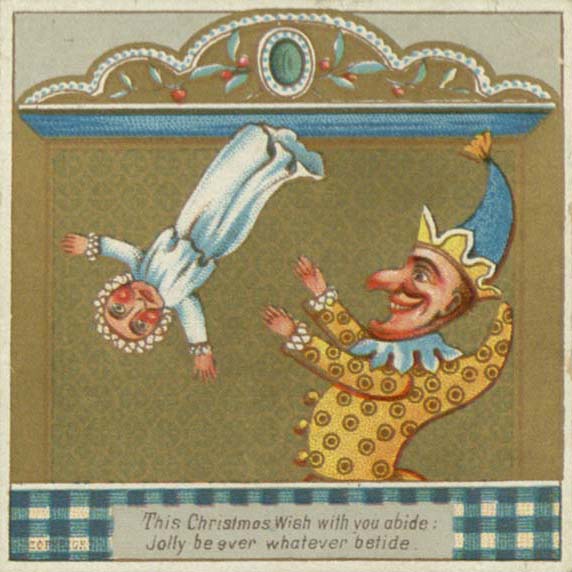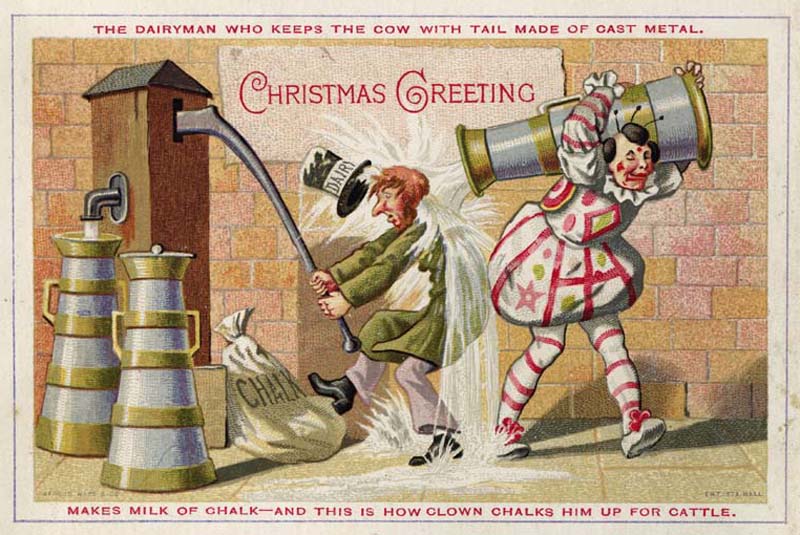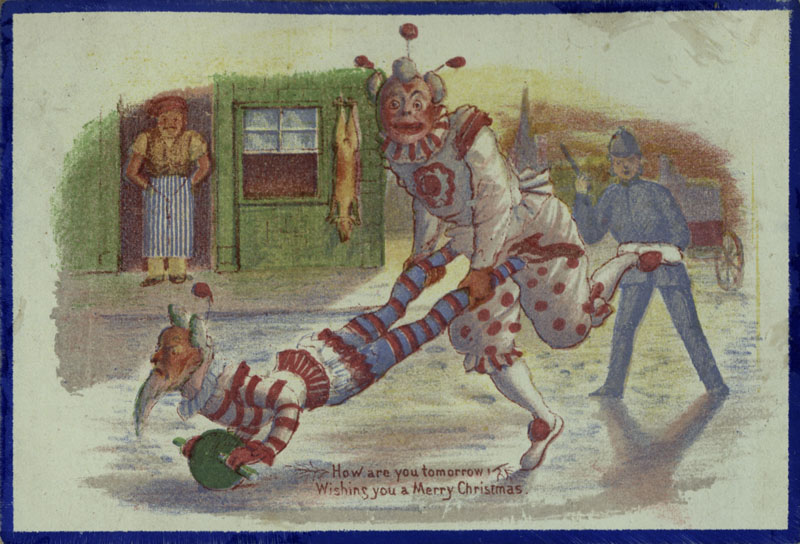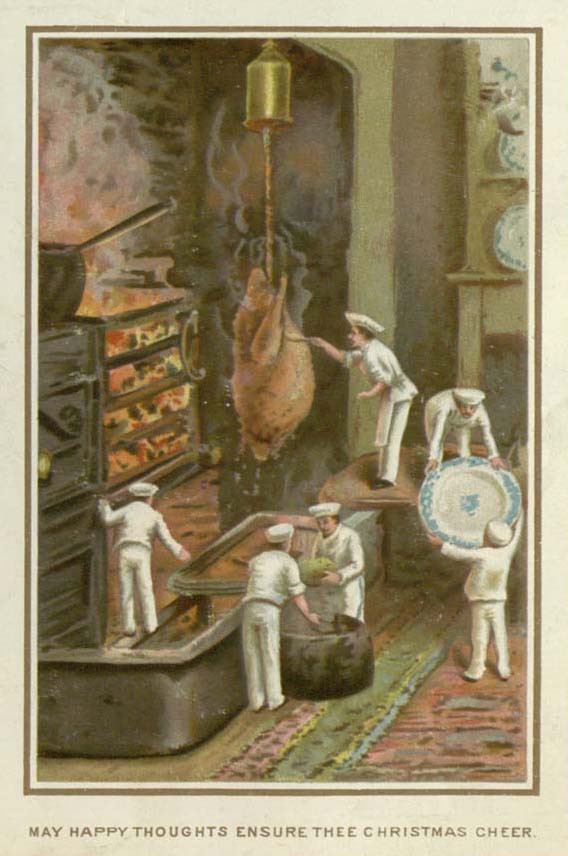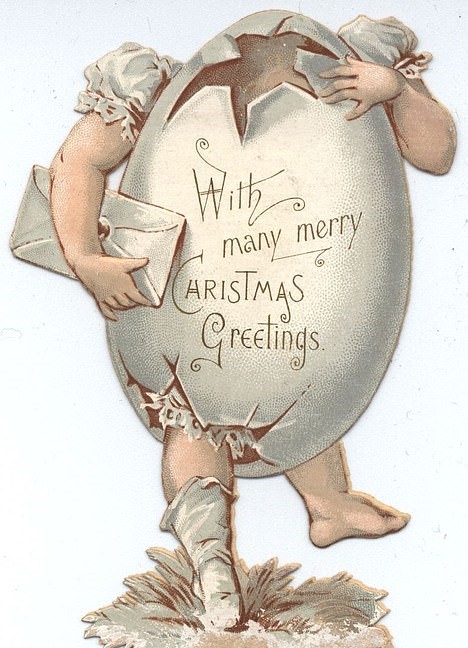The Wacky World of Victorian Christmas Cards
In 1843, English inventor Sir Henry Cole created the first commercially produced Christmas card. It was tame and festive, showing a family gathered around for Christmas dinner above an inscription wishing the recipient a Merry Christmas and Happy New Year. By the 1870s Christmas cards were being sent by nearly everyone thanks to the emergence of the affordable halfpenny stamp and advances in printing technologies that allowed for more cards to be printed for cheaper. And with the growing popularity of holiday greeting cards came the emergence of a niche subgenre that veered from happy holiday celebrations into a strange and sometimes dark place.
Here are a few of the weird and wonderful types of off-beat Christmas cards that some Victorians were sending to friends in family during the most wonderful time of the year.
1. Christmas Cards with Anthropomorphised Animals
We don’t need to look further than Lewis Carroll’s Alice’s Adventures in Wonderland to see the Victorian’s love of anthropomorphised animals. The Victorians were fascinated by creatures of the natural world, influenced by things such as the work of Charles Darwin, illustrated natural histories, the rising popularity of the zoological garden, and an increasing acceptance of keeping house pets such as dogs, birds, hedgehogs, and rabbits. Animal rights were also entering the scene with royals including the then Princess Victoria holding a membership in the Royal Society of Prevention of Cruelty to Animals. While not everyone was on board with more ‘extreme’ animal rights, it was clear that animals were engrained in the minds of the Victorian’s outside of simply specimens of labour and consumption. This cultural shift towards greater appreciation of the animal kingdom combined dramatically with the rise of mass produced Christmas cards resulting in playful and charming (if not odd) results.
2. Christmas Cards with Dead Birds
While anthropomorphised animals continue to be a delightful greeting card theme today, the Victorians had a less appealing trend of putting dead animals on their Christmas cards, most often those of the feathered variety. You could argue that lots of Christmas cards show dead birds, even today, if you consider the Christmas Turkey often sitting atop a festively decorated table. But the dead birds on Victorian Christmas cards aren’t meant to represent the traditional holiday feast. Instead these birds look recently deceased, still with their feathers, feet and beaks. They lay on their back as if they were flying around without a care in the world only moments before. So why were dead birds being sent as Christmas greetings?
One possible reason for this morbid card motif was to remind the receiver that there were people less fortunate than themselves during the Christmas season. The nineteenth-century saw the population of Great Britain increase dramatically thanks to longer life expectancy, growing families, and immigrants fleeing the potato famine and unemployment in Ireland. Employment in Britain provided poor pay for skilled and unskilled workers and when men were inevitably laid off they had no savings to help them until they found more work. This resulted in child labour being an expected way for adequate funds to be brought into the household. Many children of poorer families found themselves working dangerous jobs as chimney sweeps and miners, while others sold goods on the streets including flowers and matches. Families would often end up homeless and some children would be kicked out of their homes and left to fend for themselves. A dead bird on Christmas cards could be seen as a call for empathy and charity towards the homeless and poverty stricken individuals during the holiday season when wealthier families were watching the snow fall from inside their warm homes.
Another possible explanation is that killing birds in December, specifically wrens and robins, was considered ‘good luck‘. So sending a loved one a Christmas card of a dead bird was essentially wishing them good luck in the New Year. Whether either of these explanations was the intention, it’s still an incredibly odd way of wishing someone a Merry Christmas.
3. Christmas Cards with Creepy Clowns
Is it really Christmas if you don’t send your loved ones a creepy clown greeting card? For Victorian children, getting a Christmas card with a sinister clown wouldn’t have been out of the ordinary. Thanks to the popularity of Christmas pantomimes (still a tradition in Britain today), clowns were found on Victorian Christmas cards engaged in all sorts of amusing and strange behaviour. Some clowns were shown poking fun at socio-political topics (perhaps on cards more intended for an adult audience), while others represented beloved characters engaged in slap-stick level comedy. These types of Christmas cards are a great reminder that historical perspective is important when examining artwork from the past. Christmas clowns might be weird (and creepy) to viewers in the twenty-first-century, but nineteenth-century Victorians would have found them quite humorous.
4. And some cards that were just plain odd
While Victorian Christmas cards appear almost illogical and nonsensical, there was a reason behind their bizarre designs. The competition of creating an eye catching and unique Christmas card in the nineteenth-century was fierce. According to the Museum of London, some artists competed in actual Christmas card competitions, and card designs were reviewed in newspapers in the same way movies and books are today.
Victorians wanted unique and interesting greeting cards so the market had to keep up with their growing demands. This led to more interactive novelty cards including pop-up cards that sometimes included hidden messages or pranks. While novelty cards become increasingly popular, they were looked down upon in Christmas card competitions in favour of more ‘traditional’ Christmas scenes. But that didn’t stop them from being purchased and sent by enthusiastic buyers. A sad reminder that art snobbery doesn’t just exist in the fine arts world.
Victorian Scrapbooking and the Collecting of Greeting Cards
And with an abundance of interesting card designs, many Victorians (especially women and children) kept their favourites in a scrapbook. Like scrapbooking today, the Victorians enjoyed laying out their cards in artistic and aesthetically pleasing ways. Scrapbooks would also have newspaper clippings, calling cards, leaflets, and other documents related to a special event or family history. Some Victorians even catalogued their numerous scrapbooks and utilised each for a different category of ‘scraps’ (for example, a scrapbook for poetry, another scrapbook for newspaper clippings, etc). But some scrapbooks weren’t as particular, and a Victorian housewife would typically fill her scrapbook with whatever she pleased. Historians viewing these scrapbooks would learn a lot about the lives of the Victorians and what types of memories, events, and quotes they held dear to their hearts. The scrapbook was essentially a person’s visual diary, and greeting cards added an extra colourful, fun, and often informative element.
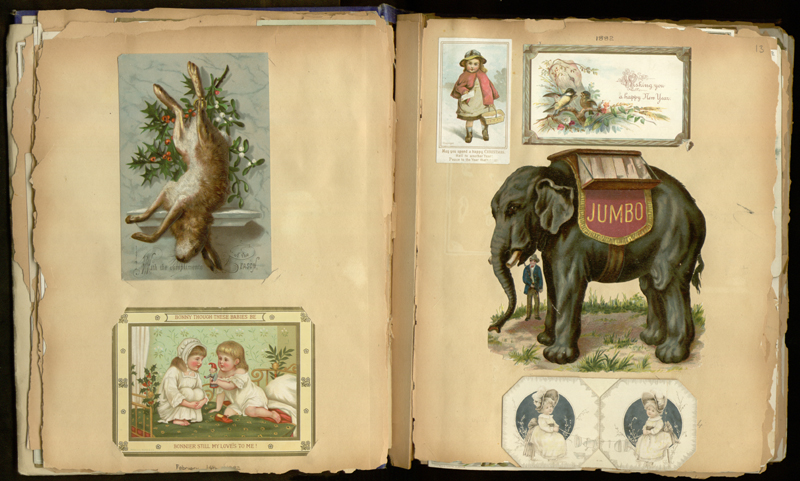
This only scratches the surface. A quick Google of ‘Victorian Christmas cards’ will bring up hundreds of strange card designs, and if you broaden your search to European Christmas cards from the same period the results get even weirder. While the Victorian’s often have the stereotype of being prudish, their penchant for curious Christmas cards showcases their often bizarre (and wonderful) sense of humour.
Sources and Additional Reading
Animals & Society – Alice’s Menagerie in Wonderland: Text and Image as a Collaborative Critique of Animal Display in Victorian London
ArtUK – weird dark and wonderful Victorian Christmas cards
BBC News – Frog murder and boiled children: ‘Merry Christmas’ Victorian style
Big Think – Ghost Stories of Christmas: A chilling Victorian tradition
Brighton Museums – Origins of the Victorian Christmas card
Collectors Weekly – The War on Christmas Cards: Dead Robins, Used Paperclips, and Other Secular Greetings
Derbyshire County Council Record Office – Merry Christmas from the Harpur Crewes
Hidden Lives – Poverty and Families in the Victorian Era
History – Some of the Earliest Christmas Cards Were Morbid and Creepy
Museum of London – Why are these Victorian Christmas cards so weird?
The Guardian – Compliments of the season… Victorian Christmas cards – in pictures
The Guardian – How the Victorians turned mere beasts into man’s best friends
Tea Tree Gully Library Blog – Christmas cards that you may not want to receive…
Victorian Web – Victorian Christmas Cards: an Everyday Work of Art

